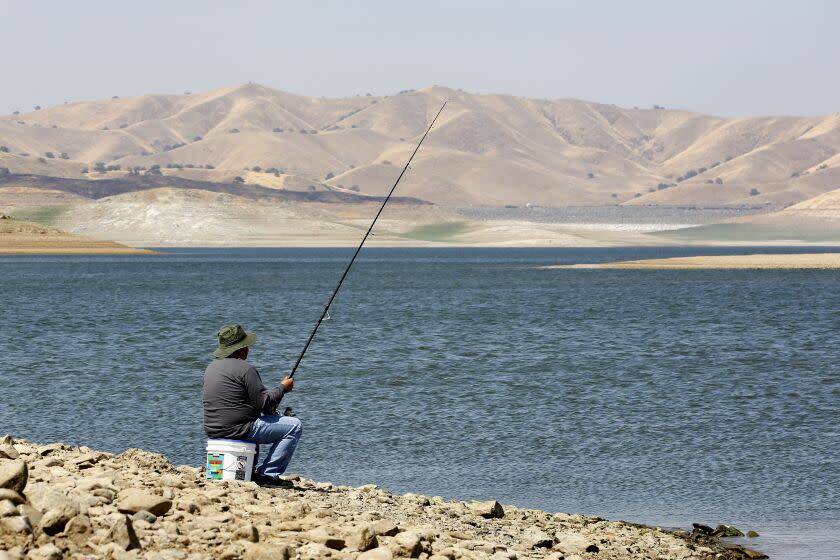Stunning before-and-after images: California reservoir went from almost empty to 100% full

California's reservoirs have been in the spotlight following months of precipitation and the end of the drought in much of the state.
A surplus of water has filled several major reservoirs, which had seen perilously low water levels.
Among them is the San Luis Reservoir, which sat at just one-quarter of its capacity on Dec. 1. The basin is now 98% full.
The reservoir, California's fifth-largest, is located near Los Banos in Merced County and supplies water to the State Water Project.
After a stunning turnaround, it sits at 114% of its historical average level.
The photo on the left shows San Luis Reservoir on March 20, 2022, when its water level was well under half of capacity. On the right, the reservoir lost water even more by July 13 as warmer weather dried out the landscape.
The reservoir continued to lose water through the summer and fall, ultimately settling at around 25% of capacity through November and December.
A year earlier, before meager winter rains, the San Luis Reservoir had dropped to a staggering 10% of capacity in November 2021.
But this year has been a different story.
Atmospheric rivers have delivered incredible amounts of rain and snow, bringing record snowpack in the Sierra, the resurrection of Lake Oroville and dangerous flooding across the state.
The photo on the left is the same as above — San Luis Reservoir on July 13, 2022. By contrast, the image on the right from March 25, shows how the landscape has been transformed from brown to green, and the water level has risen significantly.
Most of the state's reservoirs are now at or above their historical average levels.
As of March 28, state reservoirs stood at about 73% capacity, above the 30-year average of 69% for the month of March.
All the water came from a remarkable winter of storms.
It resulted in perhaps the deepest snowpack recorded in more than 70 years, officials said Monday. The snowpack is so deep that it currently contains roughly 30 million acre-feet of water — or more water than Lake Mead, the nation’s largest reservoir, according to a Times analysis of snow sensor data.
This story originally appeared in Los Angeles Times.

